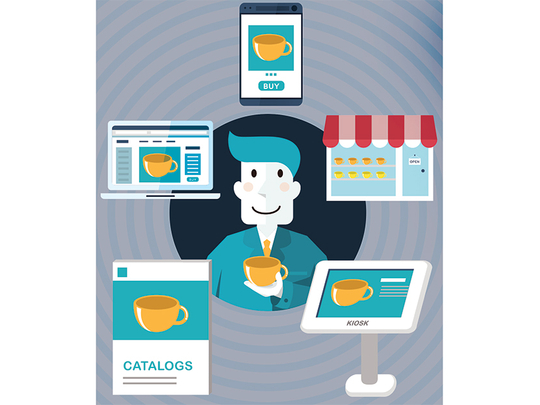
Is omni-channel just another buzz word?
Definitely not. Yes, everybody who is even remotely involved in retail, e-commerce or logistics speaks about omni-channel strategies regardless of whether they have experience with it or not. Many who are not involved in these industries do the same because it is simply “en vogue”.
Omni-channel however is an absolute must-get-right for any e-commerce and retail business that wants to be still relevant in five years.
In simple words, it is a multichannel sales strategy providing a seamless customer experience. OK, and why do I need it you might ask? You need it because your customer demands it, even if you don’t know it yet.
It is as simple as that. A “Harvard Business Review study” from 2017 showed that from 46,000 shoppers that were interviewed: 7 per cent were online-only shoppers, 20 per cent were store-only shoppers, but 73 per cent were multichannel shoppers. This vast majority of shoppers uses their mobiles, tablets, Facebook, Instagram, laptops and brick-and-mortar stores to make their purchases.
These customers want to have the option of multiple channels to purchase and expect a seamless customer experience. Retailers who want to be successful today and in the years to come, must satisfy this demand. They must not only have a good omni-channel sales strategy, but also execute well on it.
Today’s customer does not simply come to your store and purchases right away. The customer will use his mobile to chat with friends about your product, check it out on Facebook and Instagram, he might want to scan it and put it in his digital shopping cart and look at it later back home.
At home he might choose a different colour or size and then places the order in your online store. Other customers might place an order online before they come to your shop to pick up the product they ordered earlier.
Customers who are in your store already might go online to find a voucher for your products that they then want to redeem in-store while making a purchase. These are a few examples that illustrate that the online and offline worlds have merged.
If you as a retailer want to be successful, then you must ensure that you are available at all these touchpoints for your customer. Otherwise you will no longer be relevant to them, you will lose your existing customers. A study from internet Retailer and TruConsult shows that companies that execute a seamless omni-channel strategy, retain almost 90 per cent of their customers whereas single sales channel strategies only deliver 33 per cent customer retention rate.
Now, as always, everything is easier said than done. So how do you set-up an omni-channel sales strategy? And equally important, how do you execute on it?
Your strategy has to start with your organisation. As described above, there are multiple customer touchpoints and they require different departments of your business to work together. This includes marketing, sales, customer service, IT and operations.
They must all be on-board to provide a seamless customer journey. If you fail in one area, you will fail with your whole strategy to provide a seamless experience to your customer. To illustrate this: buying online and then picking up the product in-store has become very popular in many parts of the world.
Customers want to save on delivery charges, see the product and have the opportunity to return it on the spot or just get the product faster as they are visiting your shop or the area anyway. It is great if the pickup option is part of your offering, but you have to execute well on it.
Marketing has maybe done a good job in promoting this option for customers on social media. Now operations has to make sure that the product is available in-store on time to avoid customer disappointment. Customer service has to ensure that enough staff is in-store to serve the customers who come for pickup. In-store signage must show the way to the pickup location.
Customer service must be able to deal with customer returns or product rejections. So it becomes clear that all those departments play an important role in the customer journey.
Second step in designing your omni-channel strategy is finding out what websites, mediums and devices your customers usually use. Where do they shop? What social media platforms are they using?
Once you know that you have to ensure that you make every touchpoint shoppable. If a customer is on Facebook for example, then your product should show up and the customer should be able to purchase them. You can do the same with Pinterest.
Third step is to merge the online and the offline worlds. As I mentioned earlier, today’s customers often do not purchase during their first visit to your store. They are on their mobiles to compare prices, chat with friends, look for vouchers they can use in your store or they want to order a product before they come to your store just to pick it up later.
So it is critical that you can provide them with a combined online and offline experience. Remember, your customer retention rate will be more than 2.5 times that of a single sales channel retailer if you get the omni-channel strategy right.
Conclusion: as always, there are many challenges to achieve what you are aiming for. What is very clear however, is that without an omni-channel sales strategy your business will fail rather sooner than later.
So the key is to get started. Get the stakeholders of your organisation together to outline the strategy. Then start executing it.
The writer is a consultant and investor in digital media.












